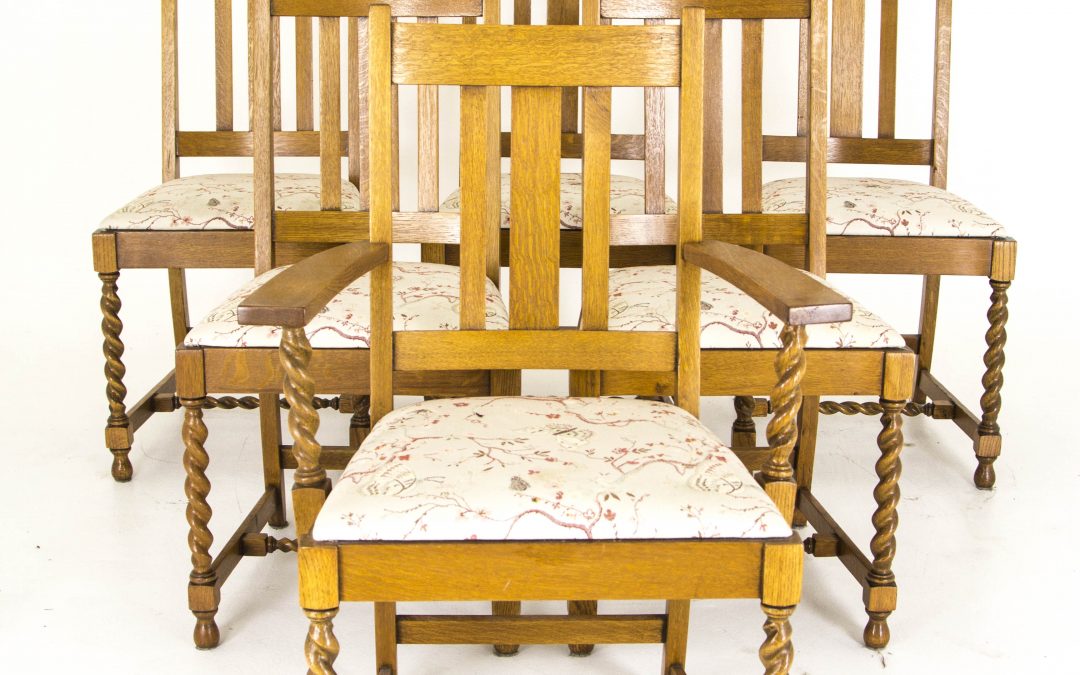History of Antique Chairs
The chair is of extreme antiquity and simplicity, although for many centuries and indeed for thousands of years it was an article of state and dignity rather than an article of ordinary use. This may explain why there are so few antique chairs available from earlier than the 16th Century.
“The chair” is still extensively used as the emblem of authority in the British House of Commons and in public meetings. It was not, in fact, until the 16th century that chairs became common anywhere.
authority in the British House of Commons and in public meetings. It was not, in fact, until the 16th century that chairs became common anywhere.
The chest, the bench and the stool were until this period the ordinary seats used in everyday living, and the number of chairs which have survived from an earlier date is exceedingly limited; most of such examples are of ecclesiastical or seigneurial origin.
Our knowledge of the chairs of remote antiquity is derived almost entirely from monuments, sculpture and paintings. A few actual examples exist in the British Museum and in the Egyptian museum at Cairo.
Victorian Parlor Chairs
 The Victorian era is known for its interpretation and eclectic revival of historic styles mixed with the introduction of middle east and Asian influences in furniture, fittings, and interior decoration. The Arts and Crafts movement, the aesthetic movement, Anglo-Japanese style, and Art Nouveau styles all have their beginnings in the late Victorian era and gothic period.
The Victorian era is known for its interpretation and eclectic revival of historic styles mixed with the introduction of middle east and Asian influences in furniture, fittings, and interior decoration. The Arts and Crafts movement, the aesthetic movement, Anglo-Japanese style, and Art Nouveau styles all have their beginnings in the late Victorian era and gothic period.
From a design perspective; interior decoration and iesign of the Victorian era were noted for their orderliness and ornamentation. A home of this period was idealistically divided into rooms, (getting away from the “one room” homes of previous times) and these new rooms featured carefully separated public and private spaces
The Importance of the Victorian Parlor
In a Victorian home the parlor was considered to be the most important room and was the showcase for the homeowners where guests were entertained. A bare room was considered to be in exceptionally poor taste, so each and every surface was filled with  objects that reflected the owner’s individual proclivities, interests and aspirations.
objects that reflected the owner’s individual proclivities, interests and aspirations.
These Victorian parlor chairs and chairs like them; with their fabulous ornamentation, would be displayed front and center for the most valued guests.
After the parlor, the dining room was the second-most important room in the house. In this room, the sideboard was most often the focal point of the dining room and very sumptuously adorned. Victorian dining tables and their matching chairs could be quite ornate as well. Victorian design in general is widely viewed as having indulged in a grand excess of embellishment.

